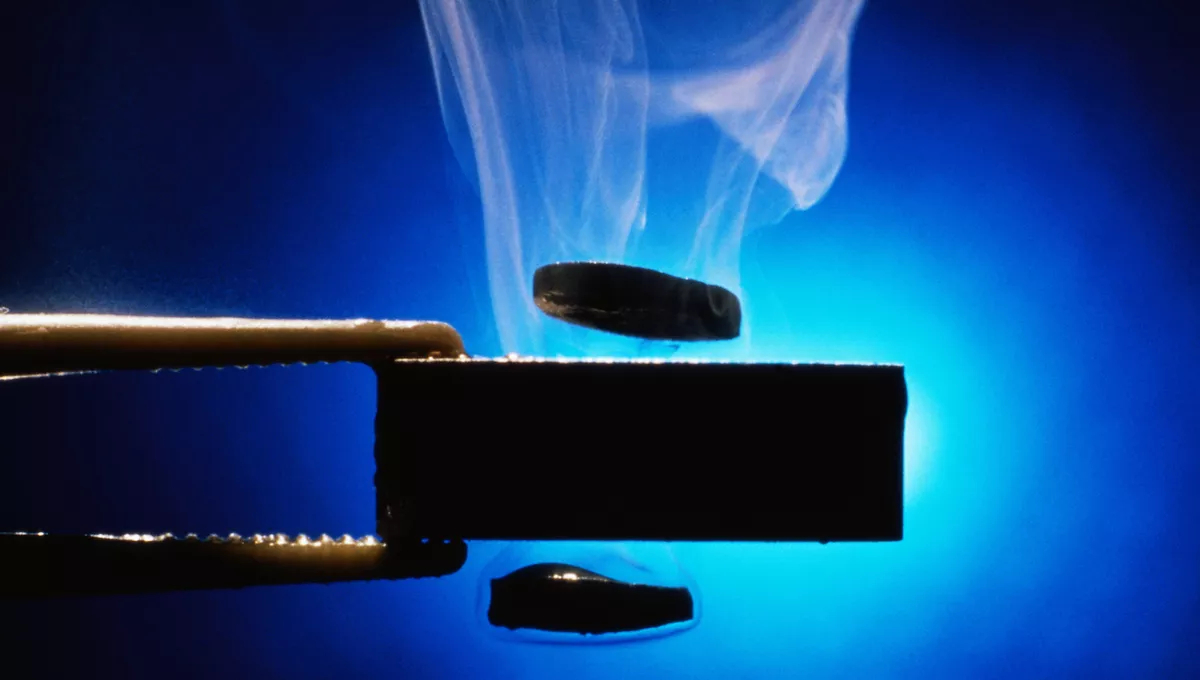Bizarre 'demon' particle found inside superconductor could help unlock a 'holy grail' of physics
The transparent, chargeless quasiparticle could shed more light on the underlying mechanics of superconductivity

An elusive "demon" particle has been observed inside a superconductor nearly 70 years after it was first predicted. Its discovery could help resolve the mystery of how superconductors work.
Pines' demon is a transparent, chargeless particle discovered inside a sample of the superconductor strontium ruthenate. It is a plasmon — a ripple across the electrons of a plasma that behaves much like a particle — meaning it's a quasiparticle.
Theorists think that plasmons may facilitate superconductivity in materials. If physicists are able to find out how, they could use Pines' demon to shed light on room-temperature superconductors — one of the "holy grails" of physics that would enable near-lossless transmission of electricity. The researchers published their findings Aug. 9 in the journal Nature.
Related: Top 10 best (or worst) terms in astronomy and physics
"Demons have been theoretically conjectured for a long time, but experimentalists never studied them," Peter Abbamonte, a physics professor at the University of Illinois Urbana-Champaign, said in a statement. "In fact, we weren't even looking for it. But it turned out we were doing exactly the right thing, and we found it."
David Pines first conceived of his demon in 1956, predicting it would emerge inside certain metals when two sets of electrons at different energy bands form two plasmons. If these plasmons fell out of phase with each other, such that the peaks of one line up with the valleys of the other, they could partially cancel out.
Usually, very specific temperatures are required to form one plasmon across an entire material, but Pines argued that his new combined plasmon, being massless, neutral and taking its components from a mix of energies, could exist at room temperatures. He named his theoretical particle, which has a "distinct electron motion," a demon. But its lack of mass and charge has made it difficult to find.
Breaking space news, the latest updates on rocket launches, skywatching events and more!
To hunt the demon, physicists behind the new study fired electrons at crystallized strontium ruthenate and measured their energies as the electrons bounced back. From this they calculated the momentum of the plasma wave inside the material.
The quasiparticle they discovered lurking inside the strontium ruthenate matched predictions for an electronic mode with no mass. Follow-up experiments replicated the researchers' initial discovery — they had found Pines' demon.
"At first, we had no idea what it was. Demons are not in the mainstream. The possibility came up early on, and we basically laughed it off," Ali Husain, now a physicist at the quantum technology company Quantinuum, said in the statement. "But, as we started ruling things out, we started to suspect that we had really found the demon."
Further study in other metals could unearth fundamental insights into how superconductors work, the study authors said. The standard theory, called BCS theory, suggests that superconductivity emerges when quantum-scale sound waves — known as phonons — jiggle electrons into pairs known as Cooper pairs, fundamentally altering their behavior to that of a superfluid.
But the possibility remains that Pines' demon may also be involved in nudging electrons together, and that could be used to understand and build better superconductors.
This article was provided by Live Science.

Ben Turner is a U.K. based staff writer at Live Science. He covers physics and astronomy, among other topics like weird animals and climate change. He graduated from University College London with a degree in particle physics before training as a journalist. When he's not writing, Ben enjoys reading literature, playing the guitar and embarrassing himself with chess.

